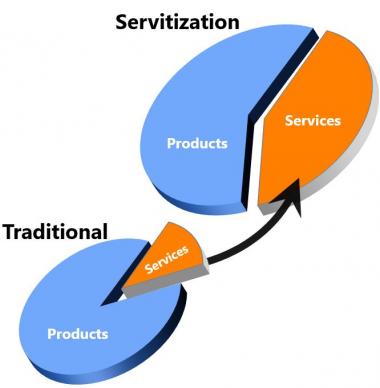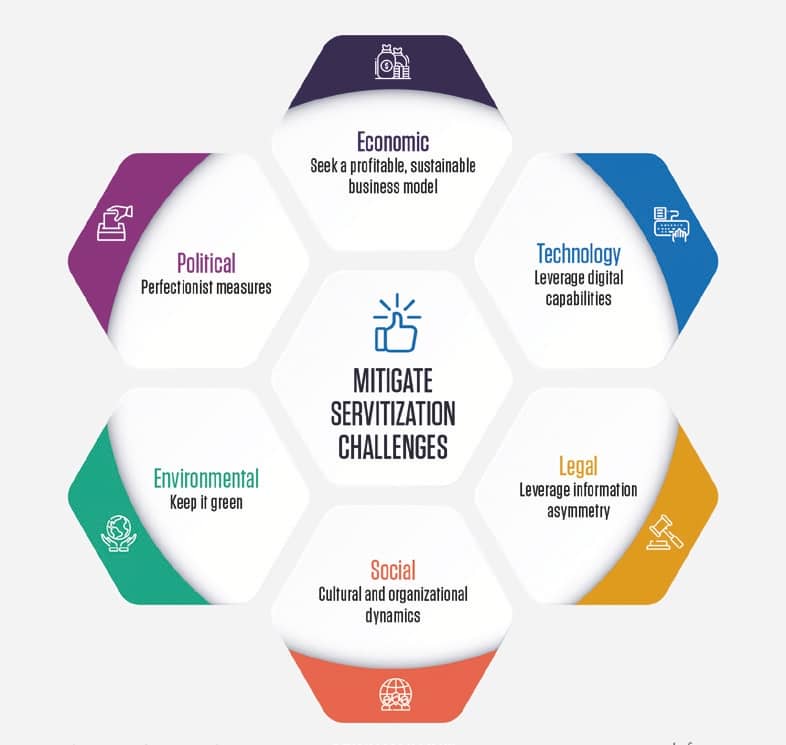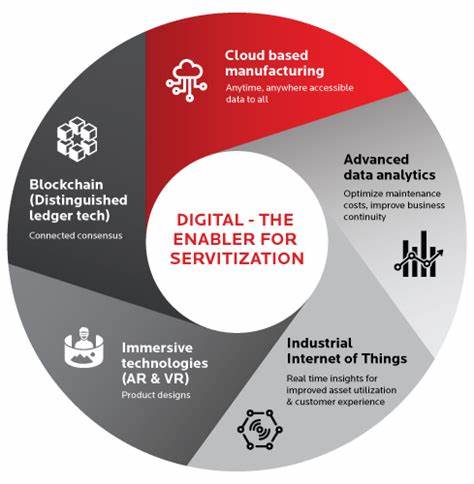In an era marked by rapid technological advancements and evolving market demands, traditional manufacturing businesses are undergoing a transformative shift. This shift moves beyond the conventional product sale model to a more holistic approach known as servitization. Dawgen Global, spearheaded by the visionary Dr. Dawkins Brown, recognizes this pivotal change and is at the forefront of advocating for the integration of servitization strategies within the manufacturing sector.
What is Servitization?

Servitization is the transformation of product-focused businesses into service-oriented organizations. It involves offering services and solutions alongside traditional products to meet evolving customer needs. This shift from selling products for ownership to providing them as part of a service—through renting or on a pay-per-use basis—enables manufacturers to deliver greater value to their customers.
The Four Models of Servitization
1. Service Improvement:
This model focuses on enhancing the reliability and availability of both products and services, ensuring they meet customer expectations consistently. A prime example can be seen in the automotive industry, where companies like Tesla provide regular software updates to improve vehicle performance and user experience, even after purchase.
2. Customer Operational Improvement:
Here, the emphasis shifts from merely providing products to enhancing the operational effectiveness of customers through value-added services. Caterpillar, the construction equipment manufacturer, leverages data analytics to offer predictive maintenance services, thus reducing downtime and operational costs for their clients.
3. New Product Capabilities:
This model extends the product’s value proposition into more comprehensive solutions, including advanced capabilities and additional functionalities delivered as services. An example is General Electric’s transition from selling jet engines to offering them on a power-by-the-hour basis, which includes full maintenance as part of the service.
4. New Revenue Streams:
This model explores ongoing, often more stable sources of revenue. Adobe’s shift from selling perpetual software licenses to a subscription-based model under Adobe Creative Cloud exemplifies this model, providing the company with a continuous revenue stream while offering customers regular updates and cloud services.
Exploring Additional Facets of Servitization
Challenges of Servitization

While the benefits are considerable, the challenges are not trivial. Manufacturers face hurdles in cultural shift, need for new skills, and increased dependency on IT systems. Overcoming these challenges requires a comprehensive strategy encompassing training, investment in technology, and a change management plan.
Drivers of Servitization
1. Technological Advancements:
The rapid evolution of technologies such as the Internet of Things (IoT), artificial intelligence (AI), and machine learning (ML) has provided manufacturers with new tools to enhance their offerings. These technologies enable the collection and analysis of data from products in use, allowing manufacturers to offer predictive maintenance, customized solutions, and other value-added services that were previously unimaginable.

2. Increased Competition:
As global markets become more accessible and saturated, manufacturers face heightened competition not only from domestic firms but also from international players. Servitization offers a way to differentiate products in a crowded market. By bundling services with products, companies can offer unique value propositions, making it harder for competitors to match their offerings.
3. Customer Demand for Added Value:
Today’s customers expect more than just a product; they seek a complete solution that includes after-sales support, maintenance, and other services that enhance the product’s value. This shift in customer expectations drives manufacturers to adopt servitization as a way to meet these demands and build stronger, longer-lasting customer relationships.
4. Pursuit of Sustainable Practices:
There is increasing pressure on businesses to adopt sustainable and environmentally friendly practices. Servitization can contribute to sustainability by extending the lifecycle of products through maintenance and upgrades, reducing waste, and decreasing the environmental impact associated with manufacturing new products. Additionally, service-based models often emphasize efficiency and resource optimization, aligning with broader environmental goals.
5. Financial Stability and Predictable Revenue Streams:
Traditional product sales can lead to cyclical or uneven revenue streams, which are often dependent on continual market expansion and customer acquisition. Servitization can smooth out revenue fluctuations and provide more predictable, stable income through service contracts and subscriptions. This financial predictability is crucial for long-term planning and investment.
6. Regulatory and Compliance Pressures:
In many industries, regulatory requirements are becoming stricter, necessitating ongoing maintenance and updates to products to ensure compliance. Servitization allows manufacturers to manage these requirements more effectively by maintaining an ongoing relationship with the product and ensuring it meets the latest standards.
These drivers illustrate why servitization is not merely an optional strategy but a critical evolutionary step for manufacturers aiming to stay competitive in the modern economic landscape. By responding to these drivers, companies can not only enhance their market position but also improve customer satisfaction and operational efficiency.
Open Loop System Manufacturing
This concept involves creating a production system that leverages feedback from the product in use. For instance, data collected from IoT-enabled devices can help manufacturers improve product design and functionality, enhancing customer satisfaction and environmental sustainability.
Dr. Brown encapsulates the essence of this shift, stating, “Servitization is not just a trend but a strategic response to the dynamic global market. It offers an avenue for sustainable growth and a closer connection with the needs of our customers.”
As manufacturers navigate this complex yet rewarding landscape, the role of thought leaders like Dawgen Global becomes increasingly vital. Through embracing servitization, manufacturers can not only enhance their competitive edge but also play a pivotal role in driving economic and sustainable development. Servitization isn’t merely a business model; it’s a comprehensive strategy for future-proofing a business in a world where change is the only constant.
Next Step!
“Embrace BIG FIRM capabilities without the big firm price at Dawgen Global, your committed partner in carving a pathway to continual progress in the vibrant Caribbean region. Our integrated, multidisciplinary approach is finely tuned to address the unique intricacies and lucrative prospects that the region has to offer. Offering a rich array of services, including audit, accounting, tax, IT, HR, risk management, and more, we facilitate smarter and more effective decisions that set the stage for unprecedented triumphs. Let’s collaborate and craft a future where every decision is a steppingstone to greater success. Reach out to explore a partnership that promises not just growth but a future beaming with opportunities and achievements.
✉️ Email: [email protected] 🌐 Visit: Dawgen Global Website
📞 Caribbean Office: +1876-6655926 / 876-9293670 📲 WhatsApp Global: +1 876 5544445
Join hands with Dawgen Global. Together, let’s venture into a future brimming with opportunities and achievements.

